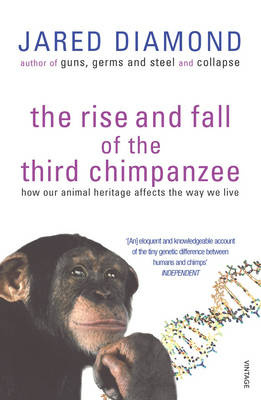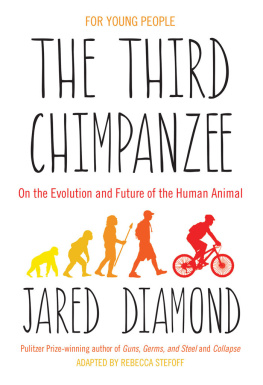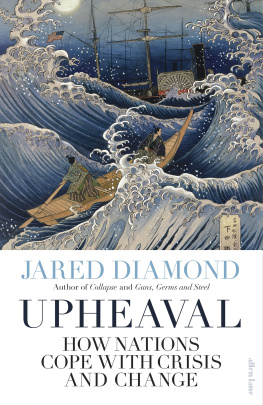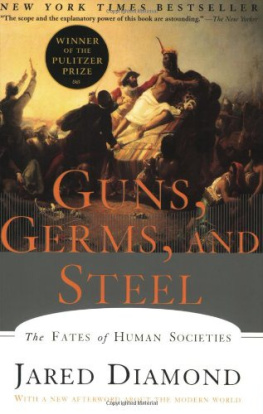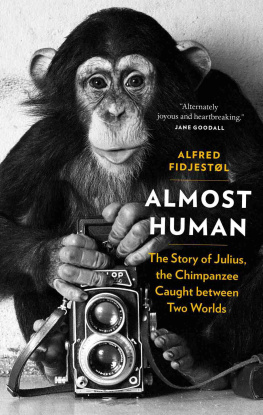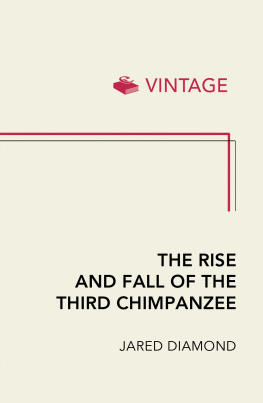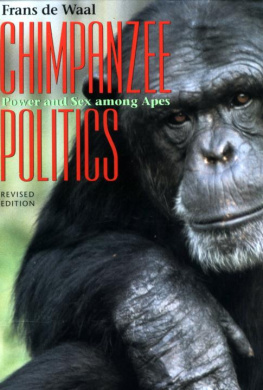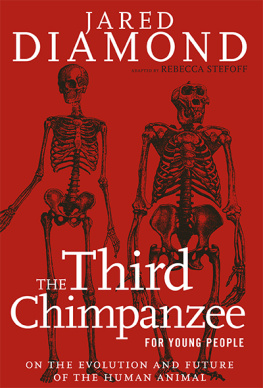PROLOGUE
It is obvious that humans are unlike all animals. It is also obvious that we are a species of big mammal, down to the minutest details of our anatomy and our molecules. That contradiction is the most fascinating feature of the human species. It is familiar, but we still have difficulty grasping how it came to be and what it means.
On the one hand, between ourselves and all other species lies a seemingly unbridgeable gulf that we acknowledge by defining a category called 'animals'. It implies that we consider centipedes, chimpanzees, and clams to share decisive features with each other but not with us, and to lack features restricted to us. Among these characteristics unique to us are the abilities to talk, write, and build complex machines. We depend completely on tools, not just on our bare hands, to make a living. Most of us wear clothes and enjoy art, and many of us believe in a religion. We are distributed over the whole Earth, command much of its energy and production, and are beginning to expand into the ocean depths and into space. We are also unique in darker attributes, including genocide, delight in torture, addictions to toxic drugs, and extermination of other species by the thousands. While a few animal species have one or two of these attributes in rudimentary form (like tool use), we still far eclipse animals even in those respects.
Thus, for practical and legal purposes, humans are not animals. When Darwin intimated in 1859 that we had evolved from apes, it is no wonder that most people initially regarded his theory as absurd and continued to insist that we had been separately created by God. Many people, including a quarter of all American college graduates, still hold to that belief today. On the other hand, we obviously are animals, with the usual animal body parts, molecules, and genes. It is even clear what particular type of animal we are. Externally, we are so similar to chimpanzees that eighteenth-century anatomists who believed in divine creation could already recognize our affinities. Just imagine taking some normal people, stripping off their clothes, taking away all their other possessions, depriving them of the power of speech, and reducing them to grunting, without changing their anatomy at all. Put them in a cage in the zoo next to the chimp cages, and let the rest of us clothed and talking people visit the zoo. Those speechless caged people would be seen for what we all really are: a chimp that has little hair and walks upright. A zoologist from outer space would immediately classify us as just a third species of chimpanzee, along with the pygmy chimp of Zaire and the common chimp of the rest of tropical Africa.
Molecular genetic studies over the last half-a-dozen years have shown that we continue to share over ninety-eight per cent of our genes with the other two chimps. The overall genetic distance between us and chimps is even smaller than the distance between such closely related bird species as red-eyed and white-eyed vireos, or willow warblers and chiffchaffs. So we still carry most of our old biological baggage with us. Since Darwin's time, fossilized bones of hundreds of creatures variously intermediate between apes and modern humans have been discovered, making it impossible for a reasonable person to deny the overwhelming evidence. What once seemed absurdour evolution from apesactually happened.
Yet the discoveries of many missing links have only made the problem more fascinating, without fully solving it. The few bits of new baggage we acquiredthe two per cent of our genes that differ from those of chimpsmust have been responsible for all of our seemingly unique properties. We underwent some small changes with big consequences rather quickly and recently in our evolutionary history. In fact, as recently as a hundred thousand years ago that zoologist from outer space would have viewed us as just one more species of big mammal. Granted, we had a couple of curious behavioural habits, notably our control of fire and our dependence on tools, but those habits would have seemed no more curious to the extraterrestrial visitor than would the habits of beavers and bowerbirds. Somehow, within a few tens of thousands of yearsa time that is almost infinitely long when measured against one person's memory but is only a tiny fraction of our species' separate historywe had begun to demonstrate the qualities that make us unique and fragile.
What were those few key ingredients that made us human? Since our unique properties appeared so recently and involved so few changes, those properties or at least their precursors must already be present in animals. What are those animal precursors of art and language, of genocide and drug abuse?
Our unique qualities have been responsible for our present biological success as a species. No other large animal is native to all the continents, or breeds in all habitats from deserts and the Arctic to tropical rainforests. No large wild animal rivals us in numbers. But among our unique qualities are two that now jeopardize our existence: our propensities to kill each other and to destroy our environment. Of course, both propensities occur in other species: lions and many other animals kill their own kind, while elephants and others damage their environment. However, these propensities are much more threatening in us than in other animals because of our technological power and exploding numbers.
There is nothing new about prophecies to the effect that the end of the world is near if we do not repent. What is new is that such a prophecy is now true, for two obvious reasons. First, nuclear weapons give us the means to wipe ourselves out quickly: no humans possessed this means before.
Second, we already appropriate about forty per cent of the Earth's net productivity (that is, the net energy captured from sunlight). With the world's human population now doubling every forty-one years, we will soon have reached the biological limit to growth, at which point we will have to start fighting each other in deadly earnest for a slice of the world's fixed pie of resources. In addition, given the present rate at which we are exterminating species, most of the world's species will become extinct or endangered within the next century, but we depend on many species for our own life support.
Why rehearse these familiar depressing facts? Why try to trace the animal origins of our destructive qualities? If they really are part of our evolutionary heritage, that seems to imply that they are genetically fixed and hence unchangeable.
In fact, our situation is not hopeless. Perhaps the urge to murder strangers or sexual rivals is innate in us, but that still has not prevented human societies from attempting to thwart those instincts, and from succeeding in sparing most people the fate of being murdered. Even taking two world wars into account, proportionately far fewer people have suffered violent deaths in twentiethcentury industrialized states than in stone-age tribal societies. Many modern populations enjoy longer lifespans than did humans of the past. Environmentalists do not always lose in battles with developers and destroyers. Even some genetic infirmities, such as phenylketonuria andjuvenile-onset diabetes, can now be mitigated or cured. Therefore, my purpose in rehearsing our situation is to help us avoid repeating our mistakesto use knowledge of our past and our propensities in order to change our behaviour. That is the hope behind the dedication of this book. My twin sons were born in 1987 and will reach my present age in the year 2040. What we are doing now is shaping their world.

